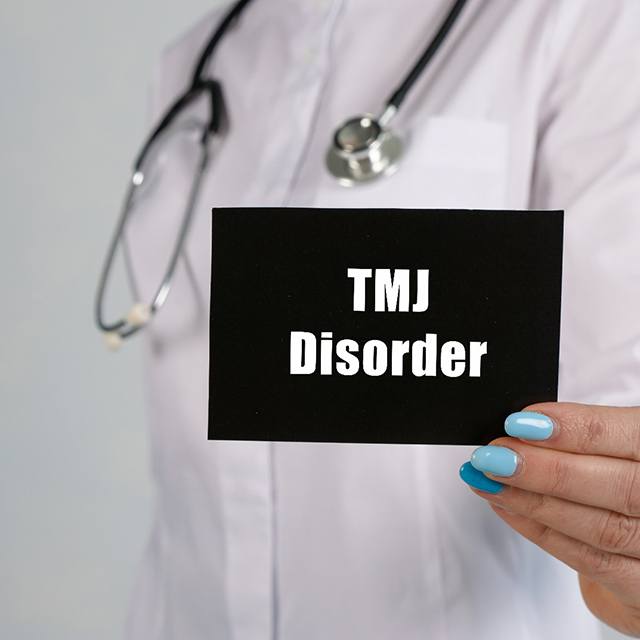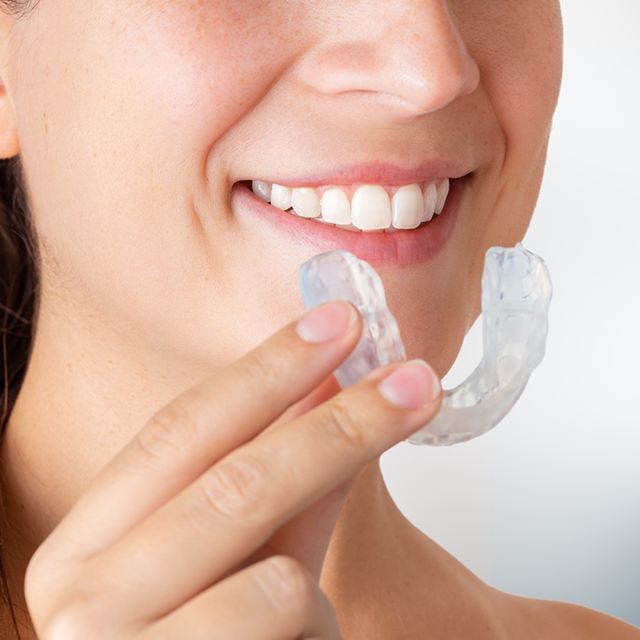TMJ Treatment—Katy, TX
Find Relief from Persistent Jaw Pain
Millions of people suffer from TMD, a disorder of the jaw joint (the TMJ) that can cause persistent pain and a range of other symptoms. If you have this bothersome condition, we invite you to visit our practice for a consultation. We will evaluate your jaw health and recommend your next steps. Hopefully, we will be able to provide TMJ treatment in Katy that provides significant, long-lasting relief!
Why Chooses Piney Point Oral & Maxillofacial Surgery of Katy/Cypress for TMJ Treatment?
- Board-Certified Oral Surgeons
- Multiple Treatment Types Available
- Friendly & Caring Team
What Is TMJ Disorder?
TMJ disorder, also known as TMJ dysfunction or simply TMD, is any of a number of problems that affect the temporomandibular joint (TMJ), which connects the lower jaw to the rest of the skull. It can also afflict the muscles and connective tissues around the TMJ.
TMD can have a number of different causes, including stress, chronic teeth grinding, poor posture, dental misalignment, and more. In some cases, the cause remains unknown. TMD is most likely to affect women of childbearing age, but it can also afflict men, children, and seniors.
Symptoms of TMJ Disorder

TMD can produce dozens of symptoms, the most common of which is pain and tenderness in the jaw. Difficulty chewing, the sensation of lockjaw, and popping and clicking in the jaw are also common.
The signs and symptoms of TMD can extend beyond the jaw as well. Other indications of this condition include:
- Earaches and tinnitus (ringing in the ears)
- Neckaches and backaches
- Frequent headaches and migraines
- Pain behind the eyes
Types of TMJ Treatment

There is no “one size fits all” TMD treatment. When you visit us or your dentist in Katy for a consultation, we will examine your teeth and mouth to strive to determine the cause of your discomfort. We may also use imaging equipment to get a closer look at your TMJ. Once we understand your condition to the fullest extent possible, we will be able to recommend your next steps. In addition to giving tips for at-home care, we may also recommend that you use professional therapy, which might include one of the following:
Occlusal Splint

An occlusal splint is a small oral appliance that resembles a mouthguard. Its purpose is to place a barrier between the upper and lower teeth in order to prevent bruxism (teeth grinding and clenching) during sleep. In addition to relieving TMD pain, an occlusal splint has the potential to protect your teeth from premature wear and tear.
BOTOX® Injections

BOTOX® is often regarded as a purely cosmetic treatment, but it also has medical applications. By strategically injecting it into the muscles around the TMJ, we can limit their movement and help them to relax. This, in turn, can take pressure off the TMJ and provide relief from a slew of TMD symptoms.
TMJ Treatment FAQs

The Piney Point team in Katy is ready to help you address your jaw pain and related symptoms. Before you book your consultation, however, you might be eager to learn more about the road ahead. To assist you, we have put together the following list of TMJ treatment FAQs, along with easy-to-understand answers. If your specific questions are not addressed here, please reach out to us directly. We are eager to speak with you!
Can TMJ Be Cured Permanently?
Our goal is to help patients experience long-term relief from TMD. We often use a combination of short-term pain relief measures combined with therapies that are designed to address the root cause of the disorder. For example, BOTOX injections can provide fast pain reduction, but they are usually a temporary measure. An occlusal splint, on the other hand, can help to take care of the underlying cause of the pain. In combination, these two treatments may allow patients to enjoy optimum jaw function and minimal discomfort.
Once the underlying cause of TMD is addressed, the disorder should not return unless other circumstances arise that could cause jaw pain.
Is BOTOX for TMJ Safe?
BOTOX is technically a toxin, so it is understandable that some patients hesitate to have it injected into their face. However, there is no real reason to worry. As long as the injections are administered by a skilled medical professional, such as an oral surgeon, there is very little risk that human error will lead to an adverse reaction.
You can, though, expect some mild side effects. For example, some patients experience bruising, slight nausea, or other issues that usually go away within a few days.
How Long Does It Take for BOTOX Injections to Work for TMJ?
Most patients begin to notice a reduction in pain within just a few days. In fact, once any side effects from the injections wear off (which may take around 48 hours), you may be amazed by how good you feel! Your results may last for 3 – 6 months or longer.
If you do not notice any improvements after receiving BOTOX injections, talk to our team about your concerns. We may need to explore other treatment options.
How Long Does It Take for a TMJ Splint to Work?
You may notice a reduction in your symptoms quite quickly if you consistently wear your TMJ splint to bed every night. In fact, many patients find relief within six weeks or so. However, optimum results may take up to 3 – 6 months or longer. Every individual is different, so be patient with the treatment and continue to comply with it for as long as our team recommends.

